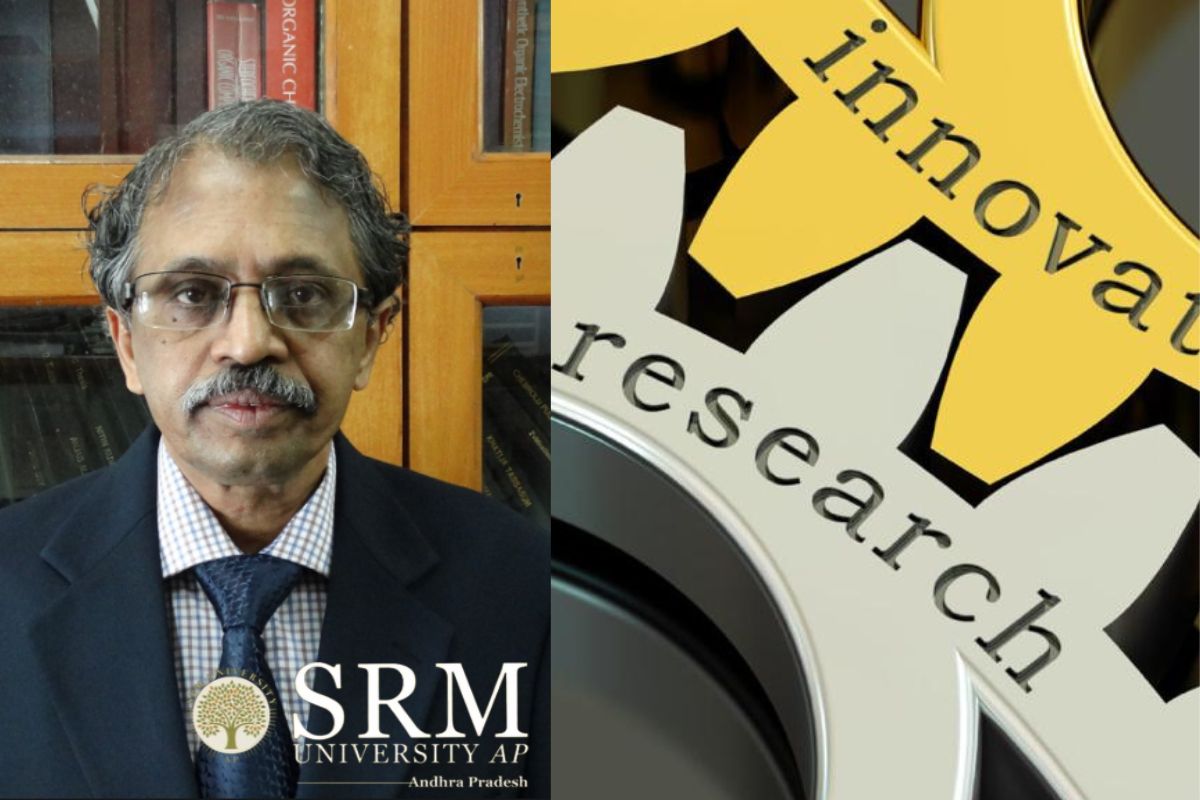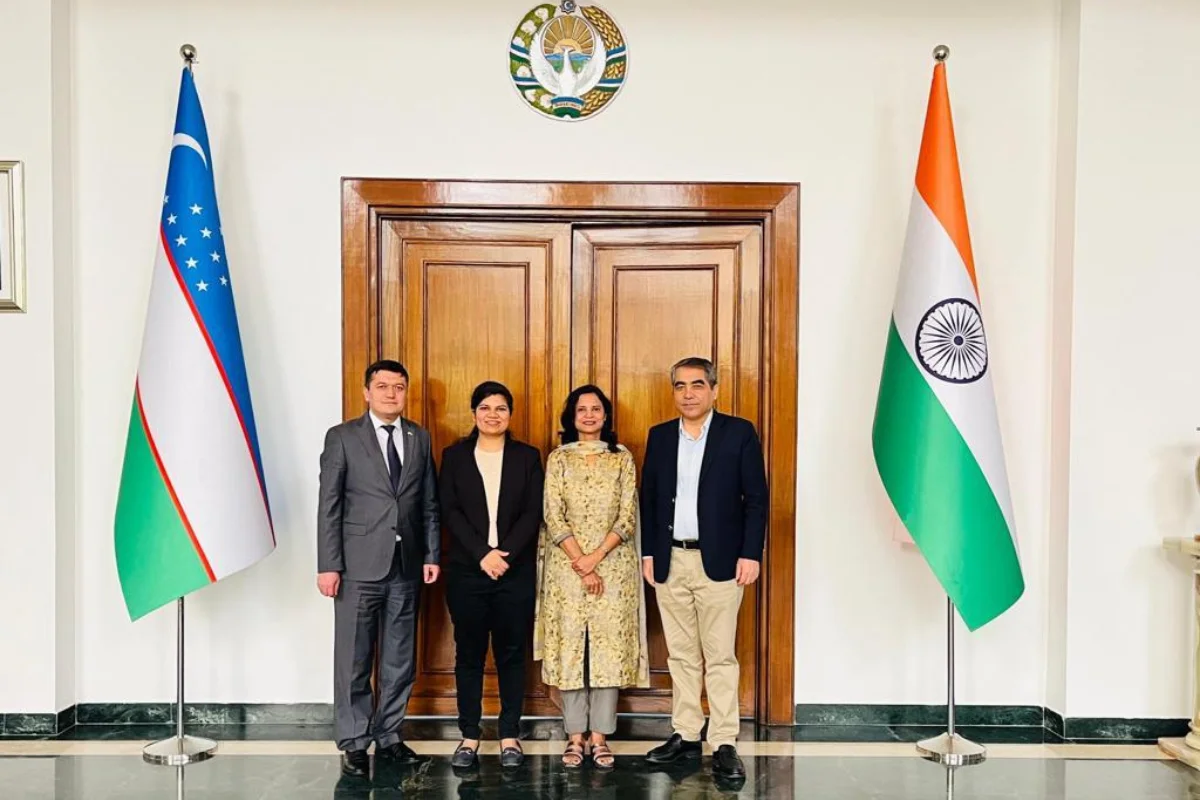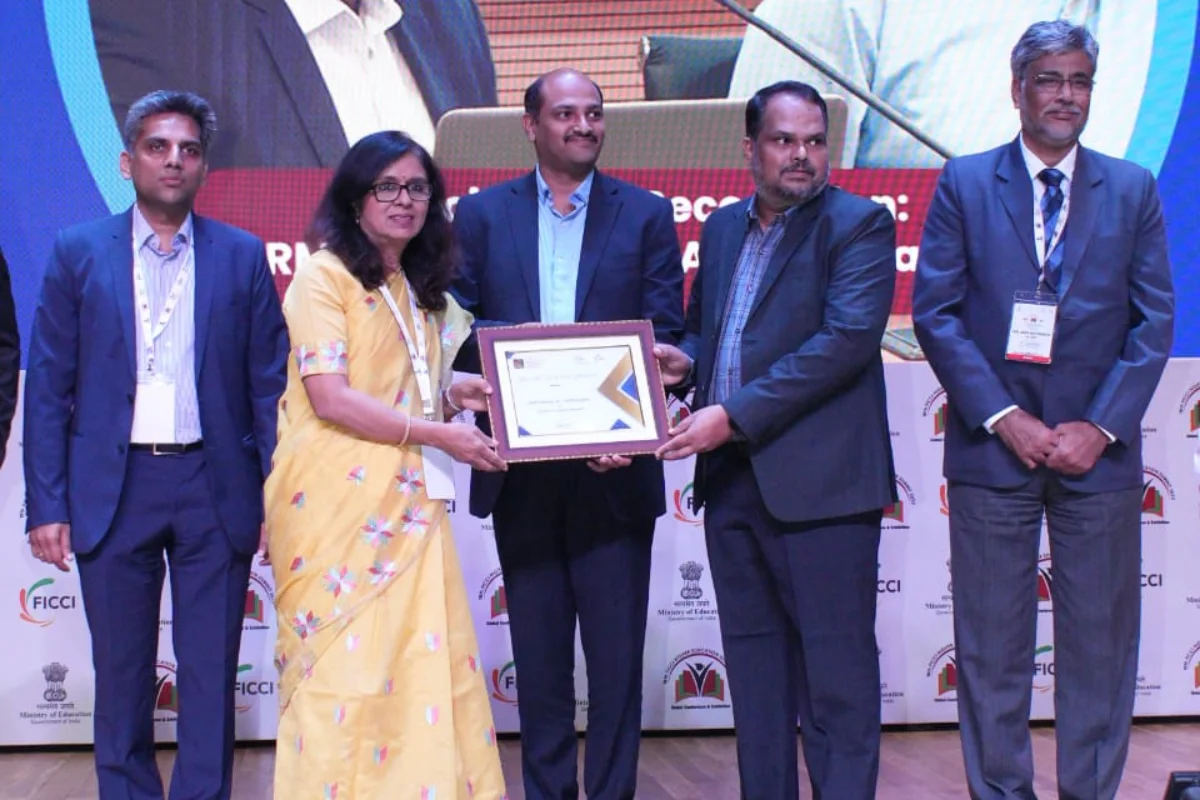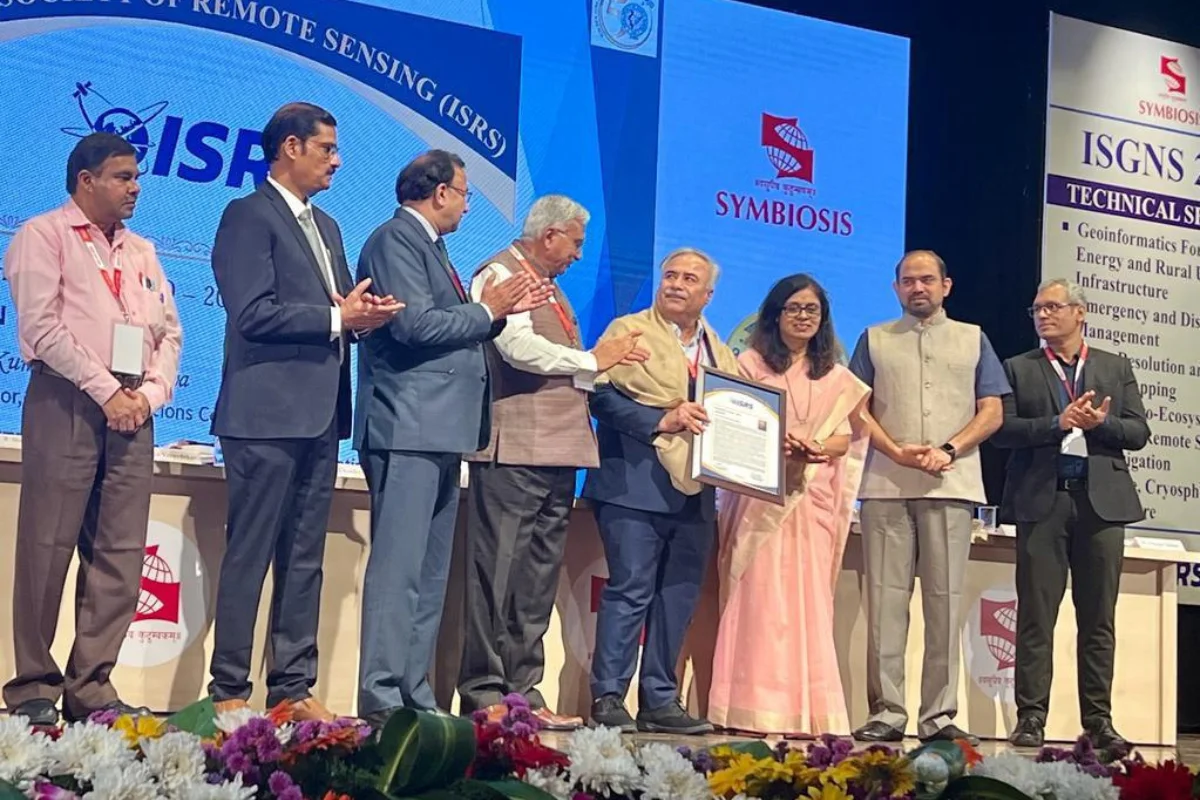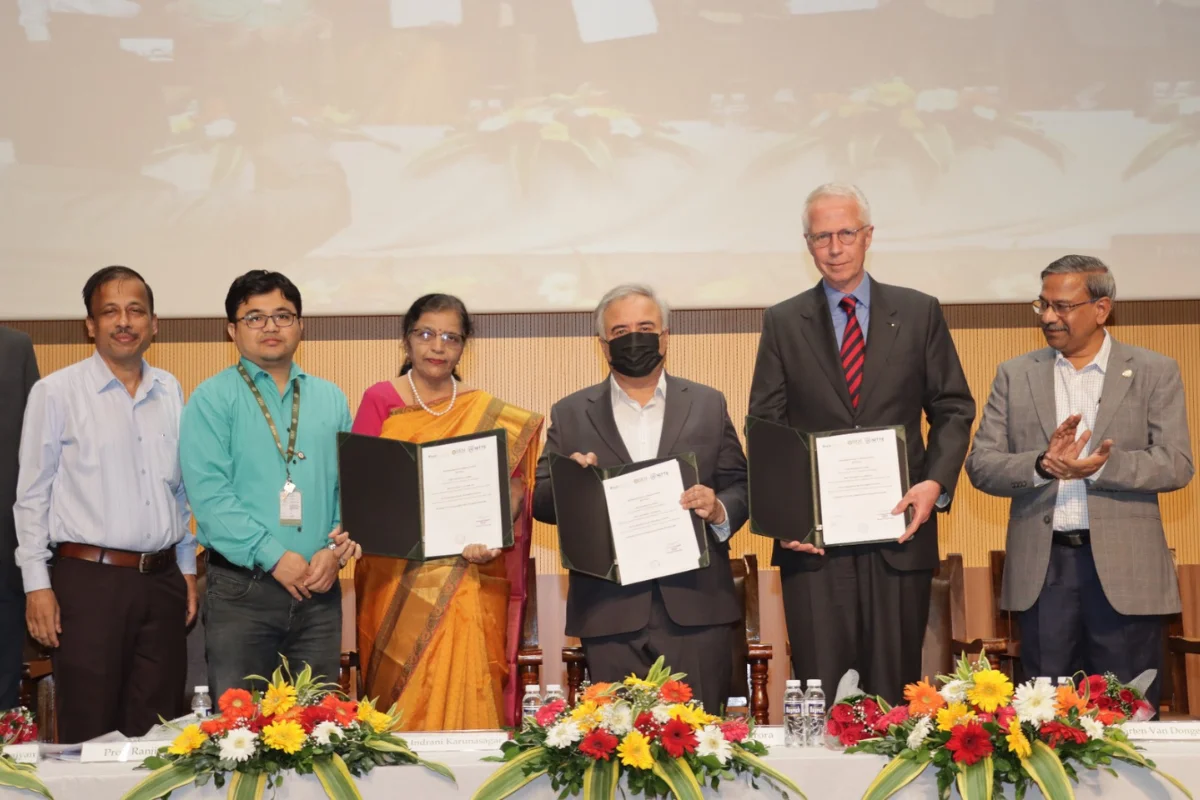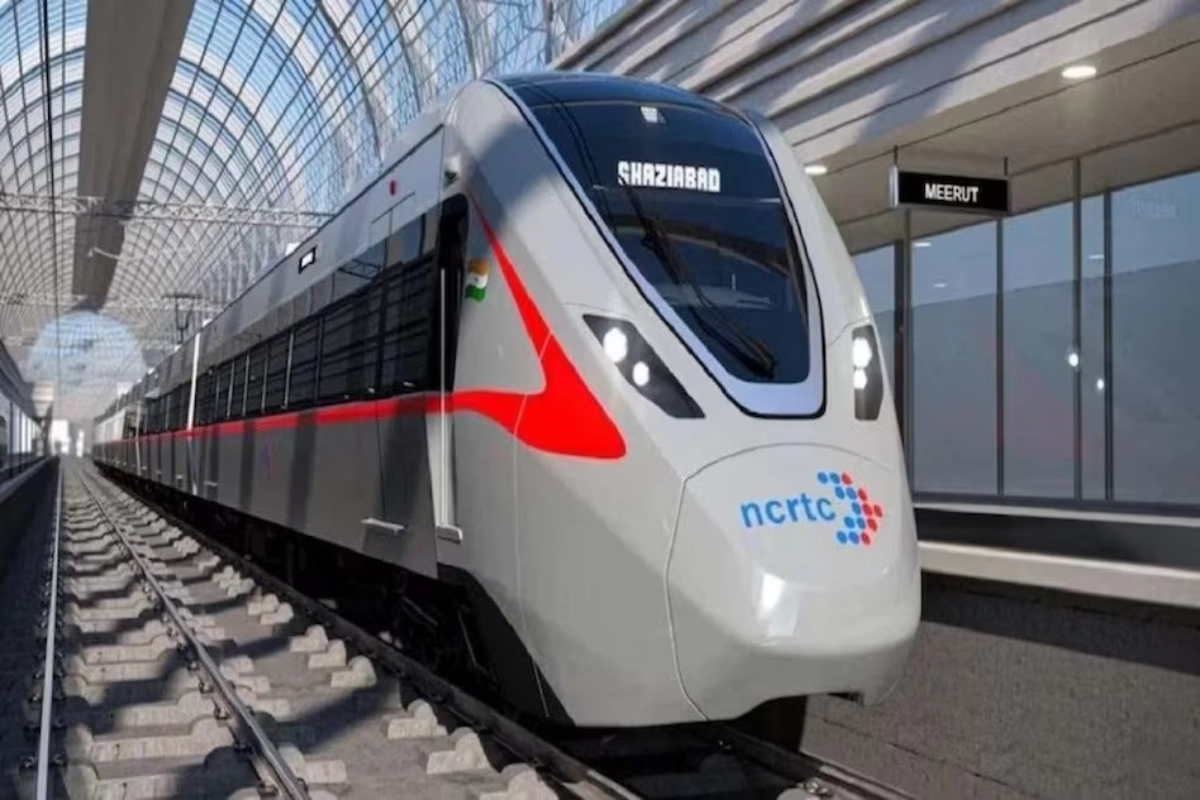SRM University: Promoting interdisciplinary research with a multidisciplinary approach both by the University and the Government will elevate research outcomes and their translation into innovation. With the triad partnership of university, government, and industry (UGI), the conversion of research outcomes into technology or products would be facilitated further, which brings in the component of knowledge complementation in addition to addressing the funding issues. Thus, research and innovation are multi-parameter-based aspects where the roles of the researcher, mentor, institute, infrastructure, funding, and government are imminent. Both Research and Innovation (R & I) are important for any university, whether it is private, state, or federal; whether the research is in science, arts, commerce, engineering, or technology; whether it is at the domestic level, school level, or higher education level; or whether it is through the career of a young professional or a senior research professional who is at the front end of the career.
The Collective Responsibility in Research and Innovation
Most often, R&I activities are conceived as the game of the researcher alone, forgetting about the role played by all these and several other related elements. The features that suit well for fostering good practices in R & I are always the same, regardless of any of these elements. The main purpose of this article is to raise some awareness of the approaches towards R & I. Parallel to this, an attempt has been made, particularly to remove any confusions about R&I that may be lingering in the minds of young researchers and mentors and all the stakeholder groups. In the present-day context, unfortunately, the tasks of R & I are often equated to a routine job, and as a result, one could neither succeed through research nor take it to the next level of innovation. Who is responsible for all this? Again, very often, this is pushed to the corner of the researcher alone. While that would contribute only to a part of the whole scenario, the environment created, and the culture built in to nurture R & I play a much greater role. All this translates to the differently weighed roles played by the researchers, the mentors, the platform being set, and the environment created by the entire University as a whole, etc. All this can be regarded as a primary cause.
Navigating the Multi-Level Impact Landscape of Research & Innovation
The secondary level of impact on the issues of R & I comes from the projections and the regulatory aspects, including the financial ones, of the governing bodies at the level of the University, the state, and the nation. Little, but significant, influence comes even from the neighbouring universities in the vicinity, which compete on similar lines, and this can be considered at a tertiary level. Among these three levels of concerns, we can certainly address and set right the first one, viz., the effect generated by the primary cause, by taking appropriate measures. Such a process would set the R&I culture right, even if secondary and tertiary concerns are not considered to any great extent. To achieve progressive levels of R & I, conviction, devotion, and dedication of the researcher are important, and all this is further augmented by adjuvants such as sincerity, preparedness, adaptability, and capability of the researcher. A better way of describing this is to consider ‘R’ and ‘I’ as two essential organs of the body, viz., the lungs and the heart, as their functions are mutually dependent, and the damage caused to any one of these will damage both permanently. Therefore, both the ‘R’ and ‘I’ are to be protected and nurtured if the University were to attain a respectable position in the ranking assigned by the national and international agencies. Such nurturing will also bless the university to attain a commanding situation since R & I would potentially be transformed into technology when executed in its true spirit.
Exploring the Dimensions of Research & Innovation
The features of R & I can be understood better only when one examines all the components associated with it, viz., the researcher, the mentor, the nature of the task, collaborations, infrastructure, funding, the environment, the university and the government, the neighbouring universities, and so on. An ideal researcher is evidently an important and indispensable individual whose role is beyond comprehension, because the researcher should understand the task and (re)define it, analyse it thoroughly, associate it with what is known, propose what needs to be done, execute it as desired and be able to interpret the outcome of the execution, enrich the knowledge with findings, and look for its translation into any kind of application for the benefit of mankind. The researcher will be able to do justice to R & I, not just by spending time but through dedicated involvement with both mental and physical actions. A true researcher will take total control of his or her research area rather than just churning out data. When the role of the researcher approaches that of an ideal, as detailed here, with added support from the mentor, the outcome of such research can be taken to greater levels and could possibly lead to its translation into innovation, including product development or technology development, provided the intermediate steps are taken care of accordingly with the involvement of other researchers who would bridge the gaps. Effective collaborations would add to this by promoting R&I at the application level. When one comes for a doctoral program, the research domain into which one enters is still broad, but the topic chosen for a Ph.D. is confined to a narrow one. Unfortunately, most present-day doctoral students forget their academic past and adjust themselves comfortably into a very narrow knowledge domain, losing even their communication abilities about the broader part of their research and related areas. This lands the researchers at their PhD level in trouble as they cannot think of what to do, how to do it, where to do it, and when to ask for help or collaborate to get the best output from their R&I efforts.
Balancing Academia and Research
This will also put the researcher in a disadvantageous position when he or she goes for academics as a profession after their doctoral degree, where the faculty is expected to tackle several aspects simultaneously, including teaching, fund-raising, execution, and management of research, besides academic administration. One of the commonly faced crises and a root cause of failing to generate effective R & I is the selection of the research problem and ensuring its smooth progress in time. The relevant issues are well within the purview of the researcher and the mentor, and both were expected to address them at an early stage and rectify them. Infrastructure is another important parameter in modern research, as it demands state-of-the-art infrastructure and research handling methodologies. When the research is more focused on innovation and developing technologies, the usage of advanced and expensive equipment and its management are unavoidable, and thereby the research turns out to be expensive as well as time-consuming. Well-trained personnel and staff are important in using advanced equipment to take such research forward and in the direction that yields useful outcomes. In some places, the visionary management is smart enough to extend the services of such advanced infrastructure to outside users and researchers so that sufficient finance is generated through this process, and funds thus generated would go for maintaining the equipment so that both local and regional research can be fostered simultaneously without being bottlenecked by the recurring expenditure.
Funding Ecosystem for Research
While there are several states-, federal-, and industry-based funding agencies, funding from the university is vital to building a platform for executing a good research work culture and to providing a seed grant to boost the performance of any researcher at the beginning of their career. With such an initiative, the researcher will get an opportunity to stand on their feet and start performing. While the university would provide basic infrastructure and a seed grant, the researcher would soon need to approach the funding agencies and raise funds to sustain good research on a long-term basis. As already addressed, a high-end instrument or infrastructure is required to translate the impact of the research into a useful product, and such equipment is generally granted by very few funding agencies as centres of excellence (CoE). The bid for such centres could come from several researchers across different disciplines from the same university or from different universities jointly, so that the chances of bringing CoE will be greater. The local administration of the university, which takes policy decisions from time to time, would play an important role in encouraging the researcher as well as the growth of impactful research. An important component of the University’s academic administration is to recognize, reward, and retain the best talent, whether it is the researchers, the technical staff, or even the mentors and faculty. This is the job of the university, for which it will receive compounded returns. The University should embark on building a platform suitable for performing world-class research, wherein interdisciplinary research is encouraged. This will be further augmented when the research is taken through a multidisciplinary approach, and it will raise the standards of the research outcome that would adorn the University with a better international ranking and contribute to making use of the research outcome in its application domain through innovation. To support high-end research, the state and federal governments should float special drive schemes, fund the centres, and encourage competitive spirit among the universities to grow with complementing qualities so that the strength of a particular institute is a strength for all the others too. All this provides friendly growth for all the deserving universities and is a win-win for the nation to boast its prime research and innovation and plunge into developing viable technologies for the country to survive in the modern era. While there are some such initiatives already in place, there is a dire need to tune up the quantum of such special drives further to cater to their advantages for a larger section of researchers in establishing their R&I more focused. Such focused efforts will lead to the building of centres of excellence (CoE) in various regions of the country, which will boost modern science and technology research and innovation across the country. Though this report tries to address several aspects directly relevant and pertinent to the growth of R&I in Universities, several other compounding parameters will pop up during the execution, and these can be addressed only based on the experience gained and the tactics developed during the execution.
A Pathway to Boosting Innovation
At present, there is a huge gap between ‘R’ and ‘I’, in the context of India, though the statistics indicate high hopes for its growth. How does one address this? It is very simple. As anyone can easily guess, the basic research (research by the ‘scientists’) should be constructively coupled with the engineering research, which means that the research should be highly interdisciplinary and even multidisciplinary with all inclusions so that innovations can be boosted, and the outcome would result in technology. Clearly, the raw material for innovation is the outcome of basic research. We have plenty of that, and what we need are policies that promote interdisciplinary research with a multidisciplinary approach both in the university environment and through governmental policies at the national level. While the gap created between Research and Innovation, on the one hand, can be filled with interdisciplinary research supplemented with multiple disciplines, on the other, it requires the involvement of an industry, which would eventually drive it to technology or production. The industry’s financial involvement in Indian R&I is less than one-third of what used to be invested in other Asian countries like Israel, South Korea, and Japan. A lot more involvement of Industry in Indian R & D is essential to boost the conversion of basic research into a product. The whole scenario of R & I can be viewed as a trilateral or triangular model where the mutual interactions between the University (U), Government (G), and industry (I) (UGI) will strengthen R & I and drive it to innovation by producing a technology or a product. Such trilateral interactions contribute to knowledge complementation besides addressing funding issues and are in line with those proposed by the National Research Foundation (NRF), an organization established by the Government of India in similar lines to that which exists in the US and is known as the National Science Foundation. The platform created by the federal government, viz., NRF, gives great hope and opportunity for India’s R & I to really shift the equilibrium towards the ‘I’ and, thereby, succeed in this venture.
Contributed By:- Chebrolu Pulla Rao, Senior Professor, SRM University, AP
Keep watching our YouTube Channel ‘DNP INDIA’. Also, please subscribe and follow us on FACEBOOK, INSTAGRAM, and TWITTER


